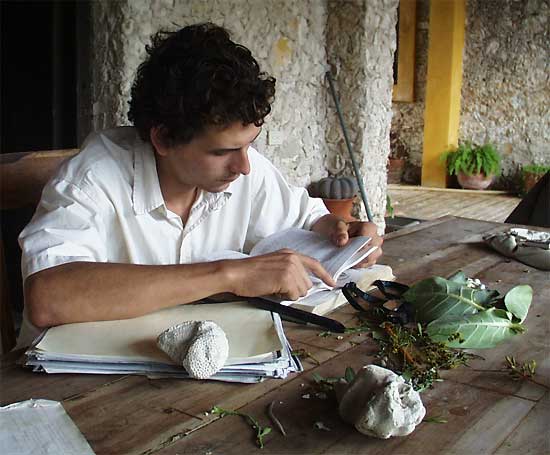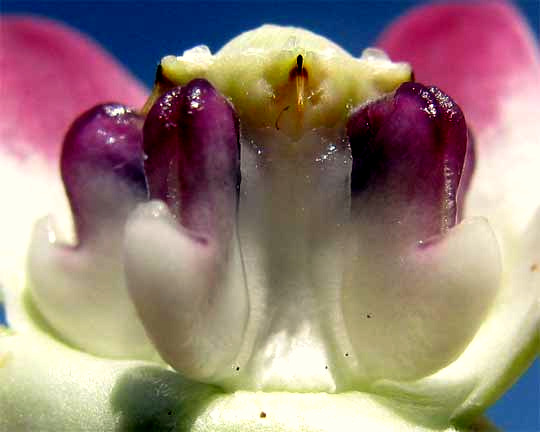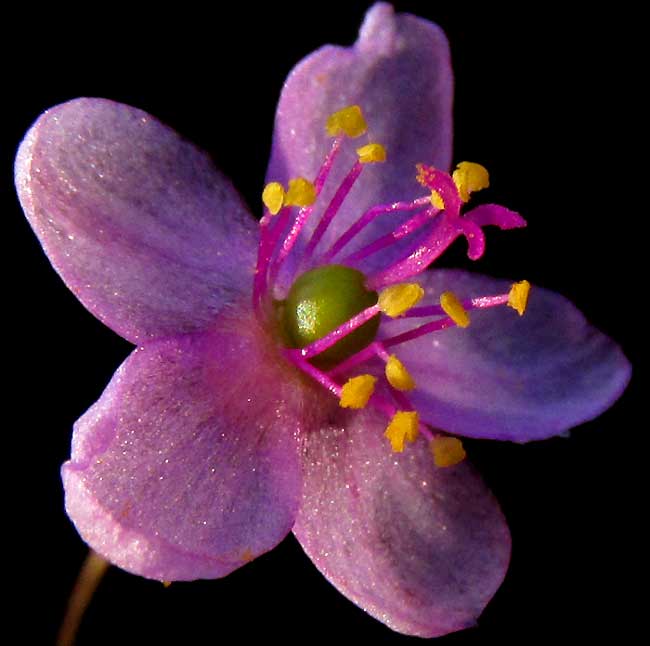
You see a flower, you sniff, you hold, you admire, and after awhile you wonder: Why is this flower the way it is?
The main reason you'd want to figure that out may not be intellectual curiosity, though that's a good one. The main reason, for some of us, may be that flower interpretation is a form of meditation which helps us feel better. Meditation on the thing itself, meditation on its form, is aesthetics, its contribution to Life on Earth, meditation on its Why? and its is-ness, with you there ising with it.

It feels flaky to talk about it, but when you're doing it, you feel like you're in a stream of something pure and good, a stream seeming to flow someplace fine.
But, how does one enter the stream?
The German philosopher Nietzsche wrote a lot of questionable stuff in his life, but at least this one thing surely he got right: "Wie die Menschen gewönlich sind, macht ihnen erst der Name ein Ding überhaupt sichtbar." (Most people don't really see something until it has a name.)

Names of things open doors. You have an herb's name, you look it up to see if the plant is medicinal, and once you're into medicinal plants, you're into something grand. You have the name "pollinarium gland" for that tiny little pointy speck of brownness stuck to the front side of the flying-saucer-shaped thing at the top of the psedicture at the right, and you can look it up and see what it's doing there. And once you know that, you're on the road to understanding how milkweed flowers get pollinated, and it's amazing what they do, a real buzz, and makes you wonder what else is out there is like that little brown speck.
So, one way to enter the stream is to find a flower and maybe with the help of our Standard Blossom page, locate on that flower the named things in the following chart, highlighted in yellow.
- a pollen-producing anther
- a stem-like filament
- an ovary
- the ovary's neck-like style
- the style's pollen-receiving stigma
- the calyx with its several sepals or calyx lobes
- the corolla with its several petals or corolla lobes
But of course it's not that simple.

Not all flowers have all or even most of the parts mentioned above, and some flowers have items not mentioned. From flower-kind to flower-kind, the parts vary in number, size, position, color and in other ways.
But, that's OK. It needs to be like that if our meditations are to apply to Real Life. Also, we know we're in a stream flowing in the right direction -- though it's a stream with surprises, complications, paradoxes, seeming impossibilities -- because the flowing feels good. Something out there gives us positive-feedback in the form of good feelings, when we meditate on flowers.
For, it's as with melodies repeating in a song: There are variations on a theme, the flower theme, pleasing to experience. Each expression evokes a new mood, feeling or insight. And, always, there's the Why?, and that pure, generous is-ness, that keeps us swimming/song-dancing gladly.
